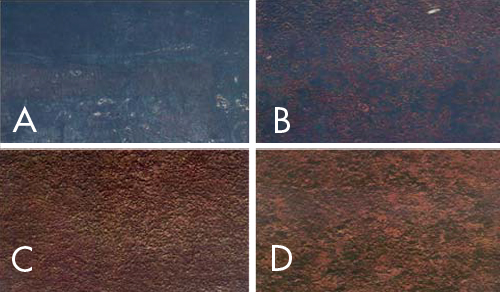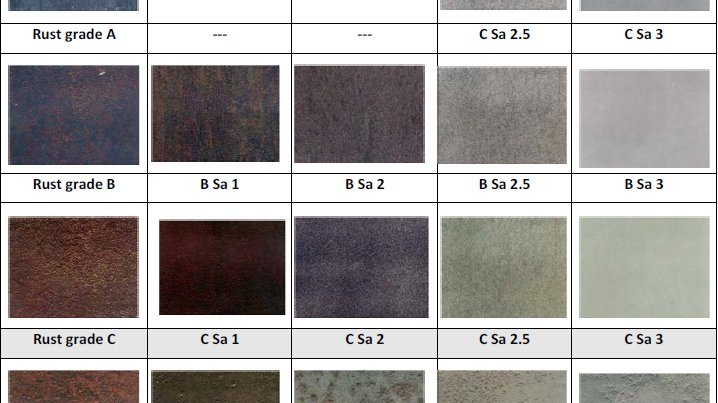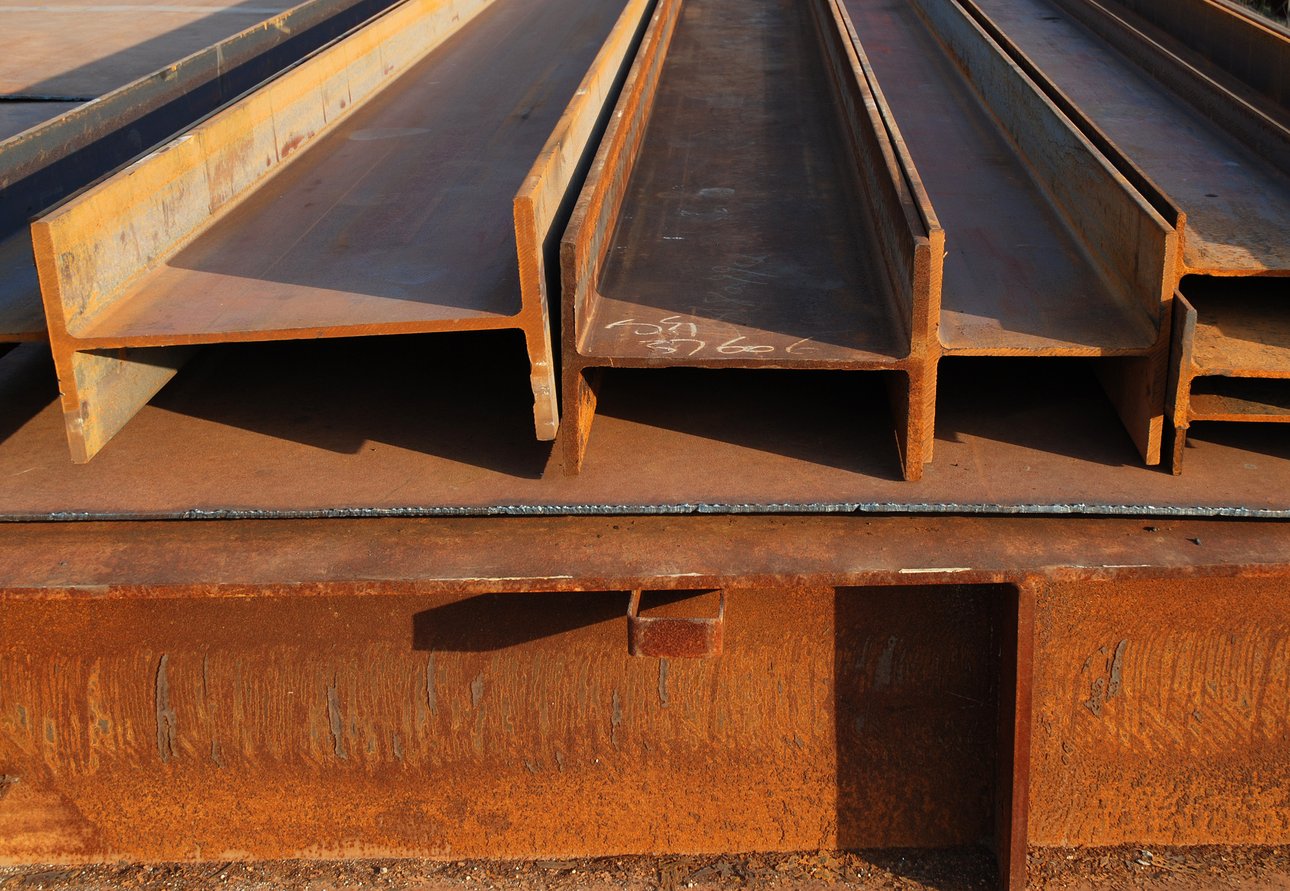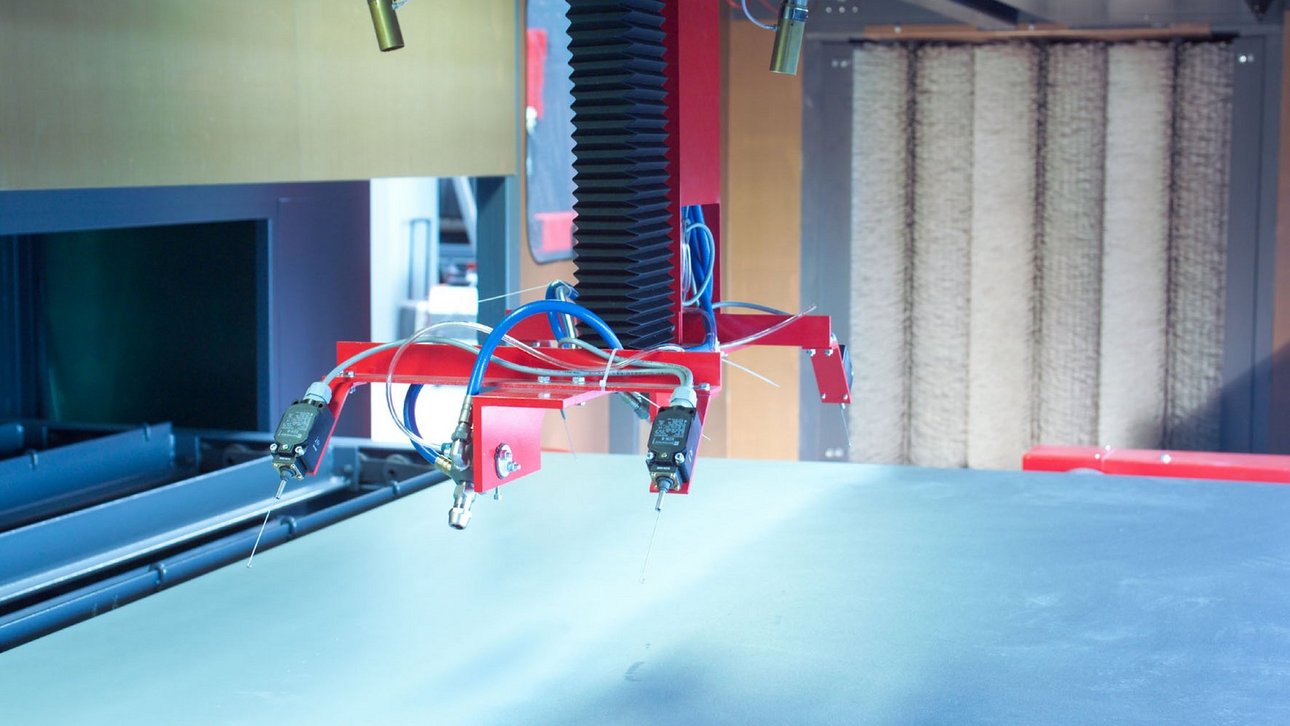
Structural Steel FAQ, Part 3 – Evaluating Rust and Mill Scale Pre- and Post-Blast
, roslerusa - Back to overview
Surface preparation can account for up to 40 percent of structural steel painting and repainting jobs.
As Rosler Metal Finishing’s Structural Steel FAQ series has already established, the life of anti‐corrosion coatings on a steel surface depends to a large extent on how thoroughly this surface has been prepared for painting.
Properly evaluating the surface of structural steel surfaces for coating before and after shot blasting will help balance the cost of preparing, repairing, and monitoring structural steel throughout its impressive lifespan.
This installment of our Structural Steel FAQ series will answer How are rust and mill scale evaluated pre‐ and post‐blast?
The Standards
Widely used standards were developed to visually assess the initial surface conditions and the quality of the required surface preparation relative to the initial steel surface conditions.
The dominant standards for evaluating rust and mill scale are ISO 8501‐1:2007 (based on the Swedish standard SIS 05 59 00), SSPC Vis 1‐89, and NACE. While different in some minor details, these standards are practically identical.
Rust Grades
The standards identify four initial rust grades based on visual evaluation as described below and shown in these examples:
- A – Steel surface covered completely with adherent mill scale and with little if
any rust - B – Steel surface which has begun to rust and from which the mill scale has begun to flake
- C – Steel surface on which the mill scale has rusted away, or from which it can be scraped, but with little pitting visible to the naked eye
- D – Steel surface on which mill scale has rusted away, and on which considerable pitting is visible to the naked eye
Preparation Grades
After blast cleaning, the standards define four preparation grades. The appearance of the shot blasted surface must correspond to one of the following descriptions and standards:
The cost to achieve longevity of each grade varies and should be considered based on initial cost as well as lifetime costs based on your structural steel’s uses and expected lifespan.
- Brush‐off – After light blast cleaning loose mill scale, rust, and foreign matter are removed. Despite being the least expensive grade of the four, brush-off preparation may not hold paint and coatings as the other grades and may require more frequent resurfacing.
- Commercial – Thorough blast cleaning removes almost all mill scale, rust, and foreign matter. This grade is normally adequate in a non-corrosive atmosphere and is more labor and cost intensive than brush-off preparation.
- Near White – Very thorough blast cleaning removes mill scale, rust, and foreign matter to the extent that the only remaining traces are light stains in the form of spots and stripes. This grade is fully acceptable for most somewhat corrosive environments. It is the most common preparation grade for ship building.
- White Metal – Blast cleaning reveals pure metal. This grade is very expensive and typically reserved for applications where the costs of coating failure are catastrophic, for example, for tanks containing highly corrosive, hazardous chemicals.
Preparation grade examples based on ISO 8501/SIS
The different preparation grades depend on the initial rust grade. ISO 8501/SIS standard grades are presented below to provide visual examples. SSPC Vis 1/89 and NACE incorporate similar visual comparisons.
The Rosler Way
Whatever your pre- and post-blast goals are for structural steel, you can count on Rosler Metal Finishing to help you find a better way. Contact us today to discuss your unique challenges.
The complete Structural Steel Series includes:
- Part 1 – Why Surface Preparation is Necessary.
- Part 2 – Methods of Surface Preparation.
- Part 3 – Evaluating Rust and Mill Scale Pre- and Post-Blast.
- Part 4 – Evaluating the Presence of Dust.
- Part 5 – Assessing Surface Profile.
- Part 6 – Blast Media’s Influence on Surface Profile.
- Part 7 – Comparing Commonly Used Blast Machines.
- Part 8 – Are All Turbines Created Equal?
- Part 9 – Removing Residual Blast Media and Dust.
- Part 10 – Blast Rooms for Touch-Ups.
- Part 11 – Preservation Lines.
- Part 12 – Material Handling Options.
Sign up for enews alerts to be notified of all Rosler blog posts!



